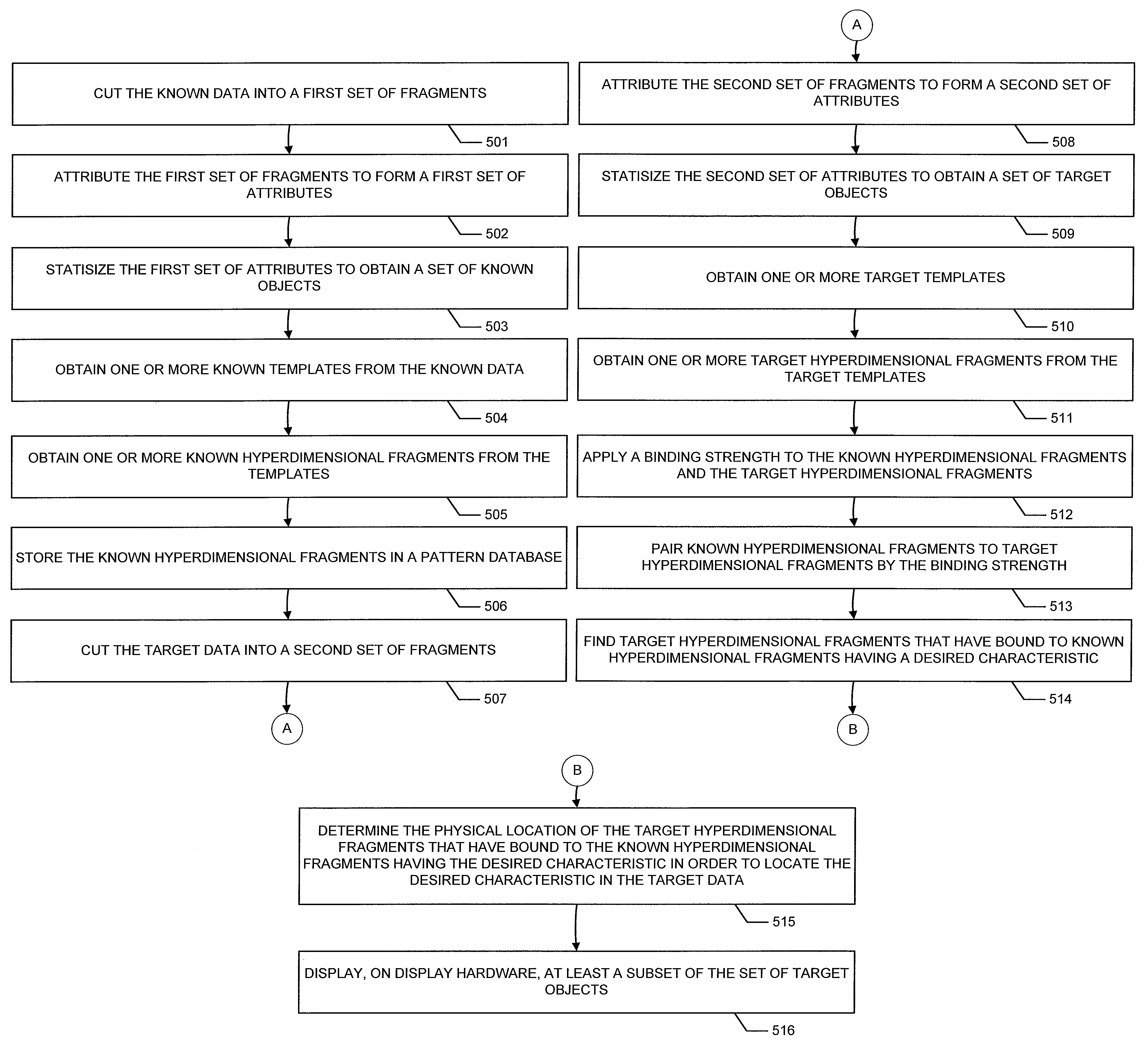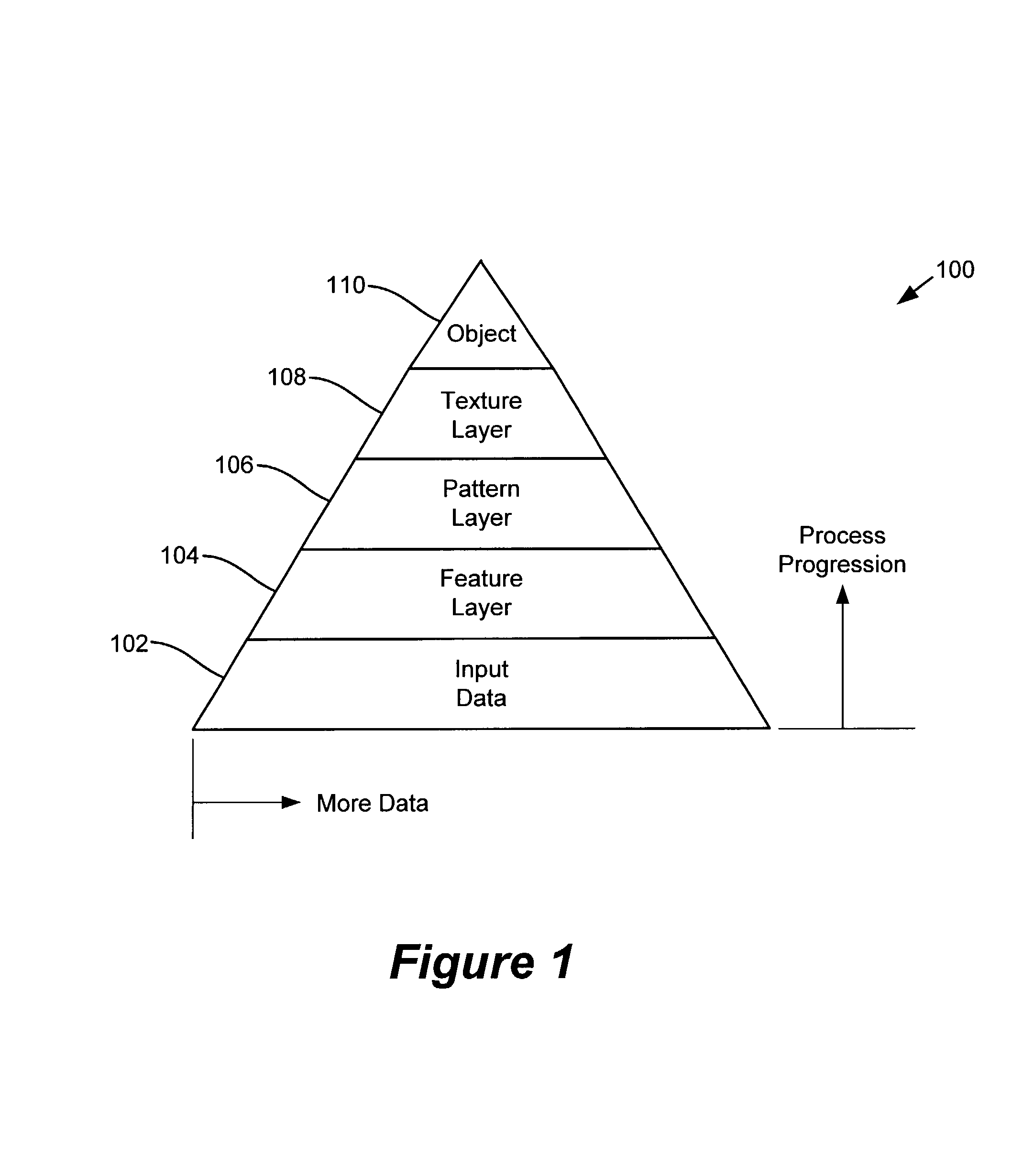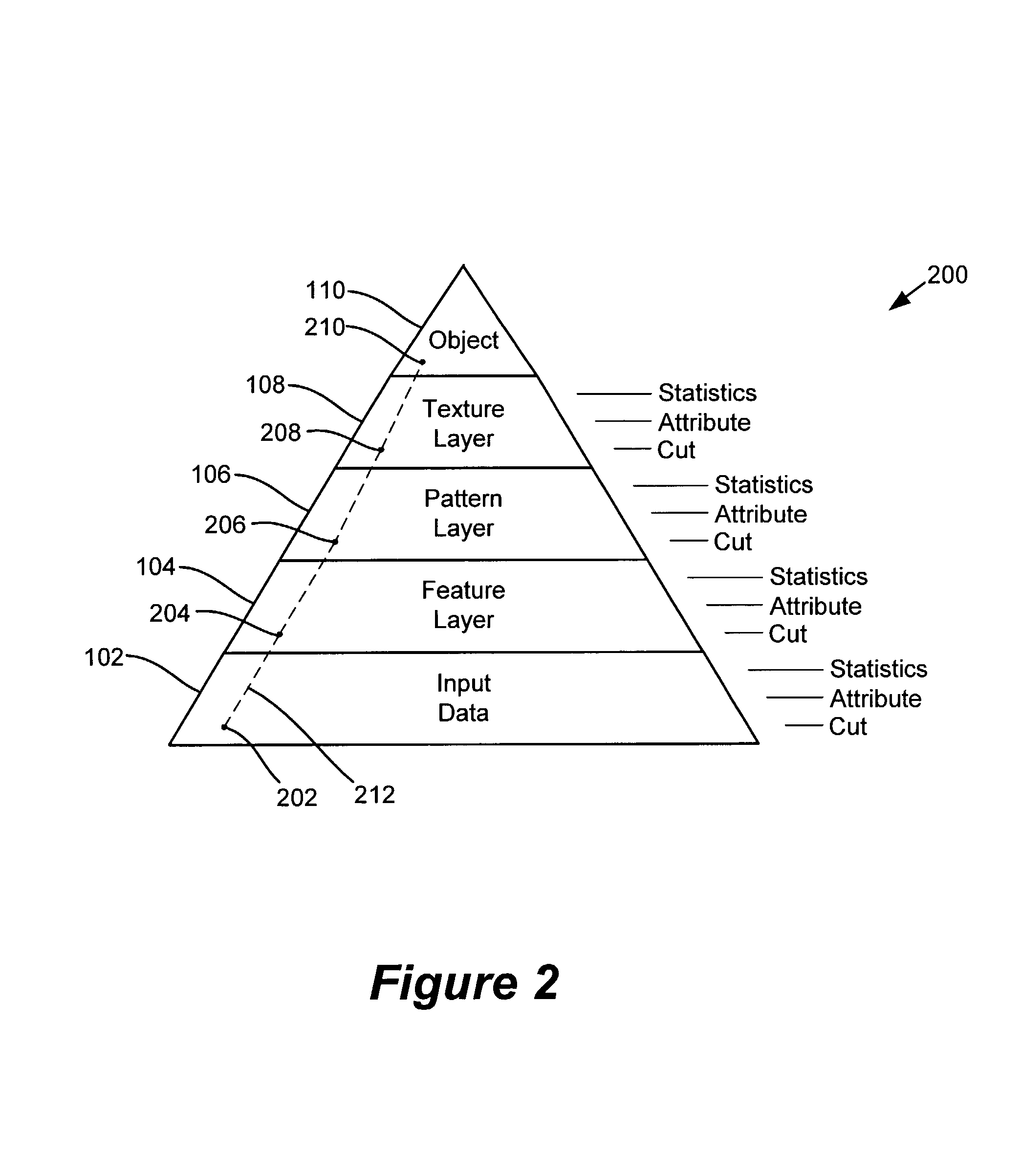Pattern recognition applied to graphic imaging
a graphic imaging and pattern recognition technology, applied in the field of computer graphics, can solve the problems of difficult to review the history of exploration decisions using conventional procedures, large textiles smear out and blur the resulting image, and the success of finding a textile size that gives results of adequate quality with sufficiently small blurring is often very difficult, so as to facilitate recognition and facilitate the recognition of certain types of geology
- Summary
- Abstract
- Description
- Claims
- Application Information
AI Technical Summary
Benefits of technology
Problems solved by technology
Method used
Image
Examples
Embodiment Construction
[0037]The present invention is preferably implemented as a set of one or more software processes on a digital computer system. However, the present invention may also be implemented purely in hardware, or may be virtually any combination of hardware and software.
[0038]The present invention utilizes a pattern database that is derived from known data, as a reference center for estimating the constituent elements of target data. The pattern database employs a DNA-like pseudo sequencing technique to process the known data that goes into the pattern database. The target data is processed in the same manner as the known data. An “affinity” or “binding strength” is determined by an operator and the two sets of data compared. The form of the processed data, as well as the binding strength, enable the identification of patterns in the target data that match the desired patterns that were identified previously in the known data. The operator of the present invention can then identify points o...
PUM
 Login to view more
Login to view more Abstract
Description
Claims
Application Information
 Login to view more
Login to view more - R&D Engineer
- R&D Manager
- IP Professional
- Industry Leading Data Capabilities
- Powerful AI technology
- Patent DNA Extraction
Browse by: Latest US Patents, China's latest patents, Technical Efficacy Thesaurus, Application Domain, Technology Topic.
© 2024 PatSnap. All rights reserved.Legal|Privacy policy|Modern Slavery Act Transparency Statement|Sitemap



